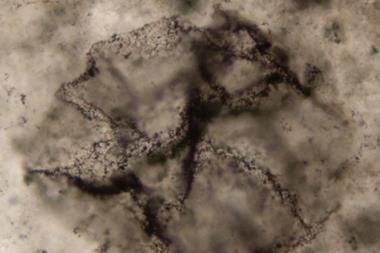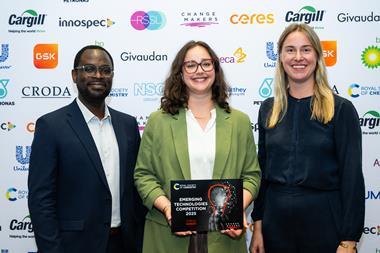A promising breakthrough in liquid condensate compartmentalisation
The Breakthrough Prizes, cannily announced just weeks before the Nobels, don’t yet attract the attention and speculation the Swedish prizes enjoy. But at $3 million (£2.6 million) apiece, they are more lucrative for the winners. The prizes are for three disciplines – fundamental physics, mathematics and life sciences – and it’s fair to say that one of the topics rewarded this year in the last of these categories was on no one’s radar 20 years ago. It went to Anthony Hyman of the Max Planck Institute for Molecular Cell Biology and Genetics in Dresden, Germany, and his former postdoc Clifford Brangwynne, now at Princeton University, US, for their discovery of the importance of liquid–liquid phase separation in cells.
In 2009 the duo reported that structures called P granules in germ cells of the nematode worm Caenorhabditis elegans are liquid droplets containing proteins and RNA molecules that have separated from the cytoplasm in a classic phase transition.1 They closely resemble structures called RNP stress granules, made from RNA and RNA-binding proteins (RNABPs). RNP granules form in cells in response to stress and have a variety of roles in metabolism, memory and development. Brangwynne also found that the nucleolus of eukaryotic cells – the region in the cell nucleus where protein-manufacturing ribosomes are made – also bears the hallmarks of a liquid droplet.
Now such liquid droplets, or ‘condensates’, seem to be everywhere. ‘Liquid phase condensation increasingly appears to be a fundamental mechanism for organising intracellular space’, Brangwynne wrote with his Princeton colleague Yongdae Shin in 2017.2 Their value is that they can be assembled rapidly and used for temporary organisation and partitioning of the interior of cells. Eukaryotic cells like ours are peppered with permanent organelles such as the mitochondria, the Golgi apparatus and the lysosomes, which can sequester certain proteins and other molecules to do their job unperturbed by the rest of the cell. But while these organelles are generally bounded by a lipid membrane, liquid condensates have none. Their ingredients simply congregate when needed and disperse afterwards, in Hyman’s analogy like a molecular flash-mob.
This happens because those ingredients – typically RNAs and RNABPs – have a stickiness for one another that is non-specific. Unlike exquisitely folded enzymes, RNABPs tend to be rather loose and disordered, and are not fussy about which RNAs they bind.
All this, however, is specific to eukaryotic cells, which demand a high degree of internal organisation. Prokaryotes such as bacteria have less need of that and lack any universal organelles. In part that’s because there is less risk of crosstalk between biochemical pathways: prokaryotes have far fewer promiscuously sticky disordered proteins than we do.
New and improved
That’s all very well for ordinary bacteria. But some researchers seeking to engineer new functions into bacteria feel that an ability to create more compartmentalisation using liquid condensates could be handy. One might imagine that all we need are some spare RNAs and RNABPs – but it’s far from easy to keep such components under control in an artificial system, so that they don’t just coagulate into cytotoxic gunk.
That’s why the success of a team based at the University of Paris, France, led by Haotian Guo, in making synthetic RNA-based droplets in E. coli bacteria is so impressive.1 The researchers make these structures, which they call transcriptionally engineered addressable RNA solvent droplets (neatly shortened to Tears), from short RNA strands containing sequences favoured by RNABPs, tethered to tails containing dozens of repeats of the triplet sequence CAG. These molecules congregate into a liquid-like blob, a kind of RNA solvent, into which proteins that bind to the tethering RNA sequence in the ‘head’ can be sequestered. Tears formation seems to be driven by the CAG chains, more or less regardless of which sequence is in the protein-binding head – and so there seems to be plenty of scope for tailoring the droplets as storage vessels for a given protein.
That’s why the success of a team based at the University of Paris, France, led by Haotian Guo, in making synthetic RNA-based droplets in E. coli bacteria is so impressive.3 The researchers make these structures, which they call transcriptionally engineered addressable RNA solvent droplets (neatly shortened to Tears), from short RNA strands containing sequences favoured by RNABPs, tethered to tails containing dozens of repeats of the triplet sequence CAG. These molecules congregate into a liquid-like blob, a kind of RNA solvent, into which proteins that bind to the tethering RNA sequence in the ‘head’ can be sequestered. Tears formation seems to be driven by the CAG chains, more or less regardless of which sequence is in the protein-binding head – and so there seems to be plenty of scope for tailoring the droplets as storage vessels for a given protein. The team could also make E. coli cells in which one set of droplets welcomed a specific protein (such as the green fluorescent protein, which makes it easy to monitor where it goes) while another set rejects it. Tears can be engineered to collocate or to separate specific enzymes, just as regular organelles do.
One of the roles liquid condensates are thought to play is as a buffer: the droplets might mop up a protein when it is in excess but release it when it is scant. In this way, these structures can suppress random ‘noise’ in protein transcription and stabilise the cell composition. The Paris team showed that Tears can similarly smooth out transcriptional fluctuations in bacterial cells.
Guo has now established a biotech startup called Ailurus in the Shenzhen technological metropolis of China to commercialise the method, in the form of what the company calls ‘a development kit, Tear-2, for engineering phase separations.’ Where the approach goes from here is all a matter of imagination: Guo says it is ready for ‘plug and play’.
References
1 H Guo et al, Cell, 2022, 185, 3823 (DOI: 10.1016/j.cell.2022.09.016)
1 C P Brangwynne et al, Science, 2009, 324, 1729 (DOI: 10.1126/science.1172046)
2 Y Shin and C P Brangwynne, Science, 2017, 357, eaaf4382 (DOI: 10.1126/science.aaf4382)
3 H Guo et al, Cell, 2022, 185, 3823 (DOI: 10.1016/j.cell.2022.09.016)












No comments yet